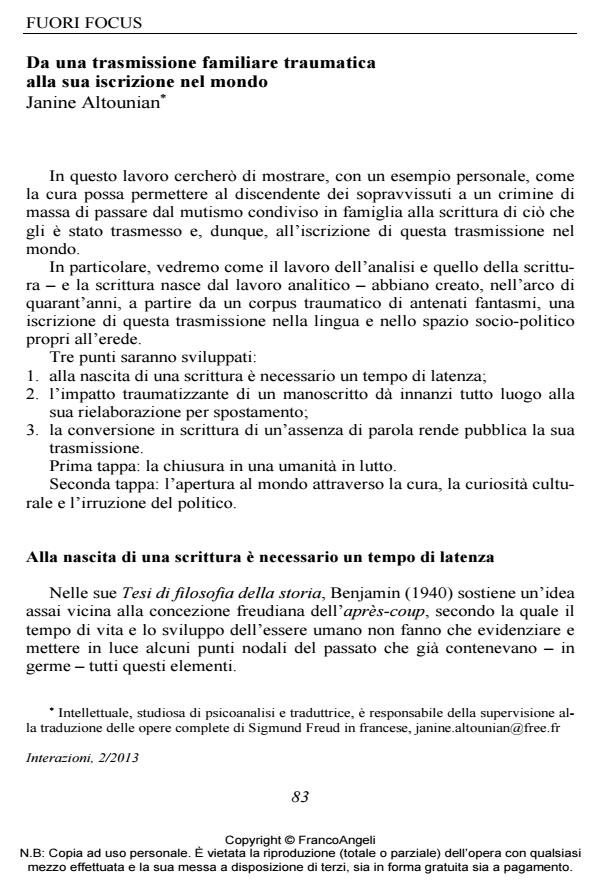From a traumatic family account to its inscription into the world
Journal title INTERAZIONI
Author/s Janine Altounian
Publishing Year 2014 Issue 2013/2
Language Italian Pages 19 P. 83-101 File size 808 KB
DOI 10.3280/INT2013-002007
DOI is like a bar code for intellectual property: to have more infomation
click here
Below, you can see the article first page
If you want to buy this article in PDF format, you can do it, following the instructions to buy download credits

FrancoAngeli is member of Publishers International Linking Association, Inc (PILA), a not-for-profit association which run the CrossRef service enabling links to and from online scholarly content.
In this text, the author elaborates on the theme of transgenerational repercussions of a non elaborated traumatic transmission through her personal account of the finding of her father’s manuscript who escaped the Armenian persecution. She shows how - through psychoanalytical treatment - the offspring of a survivor from a mass crime can shift from a family-shared silence to writing what was passed on, therefore inscribing such transmission process into the world. In particular, the author shows how analysis and writing which originate from the analytical work - created from a traumatic corpus of ghost ancestors - created an inscription into the offspring’s language and social and political spheres. The following three points are highlighted by the author: 1. a time of latency is needed to originate writing; 2. the traumatic impact of a manuscript first and foremost causes its reelaboration based on shifting (through an après-coup); 3. when the absence of words is turned into writing, its transmission is made public. First step: mankind locked into bereavement. Second step: opening up to the world through treatment, cultural curiosity and political raid.
Keywords: Trauma, transgenerational, mourning, psychoanalytical treatment, working through, traumatic transmission
- Traumi familiari e blocco generativo Alice Lazzarini, in INTERAZIONI 1/2016 pp.89
DOI: 10.3280/INT2016-001008
Janine Altounian, Da una trasmissione familiare traumatica alla sua iscrizione nel mondo in "INTERAZIONI" 2/2013, pp 83-101, DOI: 10.3280/INT2013-002007